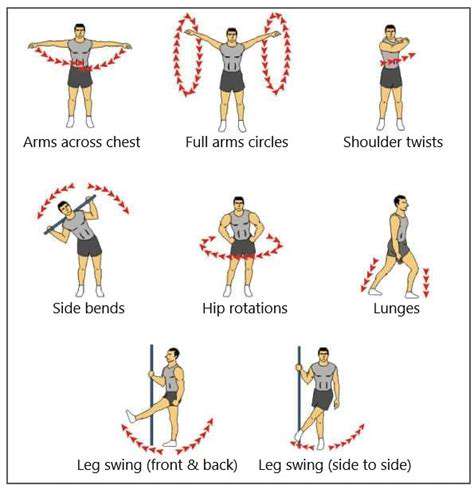Health Tips for People Recovering from Surgery

Promoting Rest and Relaxation for Optimal Healing
Prioritizing Sleep for Healing
Adequate sleep is crucial for the body's natural repair processes. During sleep, the body releases growth hormones that aid in tissue regeneration and repair. Insufficient sleep can hinder this process, impacting the healing timeline and overall well-being. Creating a consistent sleep schedule, establishing a relaxing bedtime routine, and ensuring a dark, quiet, and cool sleep environment can significantly improve sleep quality and promote healing.
Aim for 7-9 hours of quality sleep each night. This allows your body to fully recover from the day's activities and prepare for the challenges of the healing process. Avoid screen time before bed, as the blue light emitted from electronic devices can interfere with melatonin production, making it harder to fall asleep. A regular sleep schedule, even on weekends, helps regulate your body's natural sleep-wake cycle, further enhancing sleep quality.
Stress Management Techniques
Chronic stress can negatively impact the healing process. High levels of stress hormones can interfere with the immune system's ability to function optimally, slowing down tissue repair. Incorporating stress management techniques can be beneficial for those recovering from illness or injury. These techniques can help reduce stress levels and promote relaxation.
Mindfulness and meditation practices can help quiet the mind and reduce stress responses. Deep breathing exercises can calm the nervous system and promote relaxation. Physical activities, such as yoga or light exercise, can also be beneficial in managing stress. Finding healthy ways to cope with stress will contribute significantly to a quicker and more effective healing process.
Nourishing Your Body with Healthy Foods
A balanced diet rich in vitamins, minerals, and antioxidants is essential for supporting the body's natural healing mechanisms. Nutrients such as vitamin C, zinc, and protein are particularly important for tissue repair and immune function. Focusing on whole, unprocessed foods, such as fruits, vegetables, lean proteins, and whole grains, can provide the necessary nutrients for optimal healing.
Creating a Relaxing Environment
A calming and comfortable environment can significantly impact the healing process. Reducing external stressors such as noise and clutter can help promote relaxation and reduce anxiety. Creating a space that fosters a sense of peace and tranquility can aid in reducing stress hormones and allowing the body to focus on healing.
Soft lighting, calming music, and comfortable seating can create a relaxing atmosphere. A warm bath or a gentle massage can also help promote relaxation and reduce muscle tension. A quiet space free from distractions can help the body focus on the healing process.
Engaging in Relaxing Activities
Engaging in relaxing activities can help reduce stress and promote a sense of well-being. Activities such as reading, listening to music, spending time in nature, or pursuing hobbies can provide a much-needed mental and emotional break. These activities can help to distract from the pain or discomfort associated with the healing process, promoting a sense of calm and well-being.
Hobbies and interests can provide a sense of purpose and joy during recovery. Taking time to engage in activities that bring you pleasure can be a powerful tool in the healing process. Make sure to incorporate activities that you enjoy and that promote relaxation and mindfulness.
Maintaining Mobility and Preventing Complications

Maintaining Mobility through Exercise
Regular physical activity is crucial for maintaining mobility and preventing age-related decline in physical function. Engaging in a variety of exercises, including strength training, cardio, and flexibility exercises, can help to improve muscle strength, endurance, and balance, all of which are essential for independent living. These exercises not only strengthen muscles and bones but also improve cardiovascular health, reducing the risk of falls and other mobility-related injuries. Furthermore, maintaining a consistent exercise routine can significantly enhance overall well-being and quality of life.
Choosing activities you enjoy is key to sustaining a long-term exercise regimen. This could involve activities like swimming, dancing, brisk walking, or cycling. Finding an exercise buddy or joining a fitness class can also provide motivation and support, making it easier to stay committed to your fitness goals. Consistency is paramount in achieving and maintaining mobility, so aim for at least 30 minutes of moderate-intensity exercise most days of the week.
Preventing Falls and Injuries
Falls are a significant threat to mobility, particularly among older adults. Taking proactive steps to prevent falls can greatly impact maintaining independence and reducing the risk of serious injuries. This includes assessing your home environment for potential hazards, such as loose rugs or poor lighting, and making necessary modifications. Installing grab bars in bathrooms and hallways, and ensuring adequate lighting throughout the home can dramatically reduce the risk of falls.
Regular vision check-ups are essential for maintaining mobility. Changes in vision can significantly impact balance and coordination. Wearing appropriate footwear, such as supportive shoes with good traction, is also important to prevent slips and falls. By addressing these environmental and personal factors, you can significantly reduce your risk of falls and maintain your mobility. Consulting with a healthcare professional can provide tailored advice on fall prevention strategies based on individual needs and health conditions.
Addressing Underlying Health Conditions
Many underlying health conditions can impact mobility and increase the risk of falls. Managing these conditions effectively is crucial for maintaining independence and preventing mobility issues. Conditions such as arthritis, diabetes, and cardiovascular disease can all affect joint function, balance, and stamina. Working closely with your healthcare team to manage these conditions through medication, lifestyle changes, and rehabilitation programs is vital to maintaining mobility.
Regular medical check-ups, adherence to prescribed medications, and healthy lifestyle choices, such as a balanced diet and stress management techniques, are all important strategies for managing underlying health conditions and supporting mobility. Early detection and effective management of these conditions can significantly improve overall well-being and physical function. It's essential to communicate openly with your doctor about any concerns or changes in your health to ensure appropriate care and support.
Read more about Health Tips for People Recovering from Surgery
Hot Recommendations
-
*Guide to Managing Gout Through Diet
-
*Best Habits for Financial Well being
-
*How to Build a Routine for Better Mental Health
-
*How to Eat Healthy on a Budget [Tips & Meal Ideas]
-
*Guide to Practicing Self Acceptance
-
*How to Incorporate More Movement Into Your Day
-
*Guide to Managing Chronic Pain Naturally
-
*Guide to Building a Reading Habit for Well being
-
*Top 5 Weight Loss Supplements That Actually Work
-
*Best Exercises for Postpartum Recovery [Beyond Abdominal Work]











